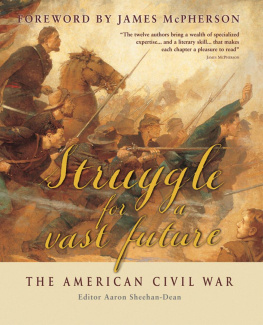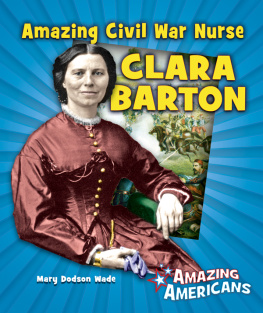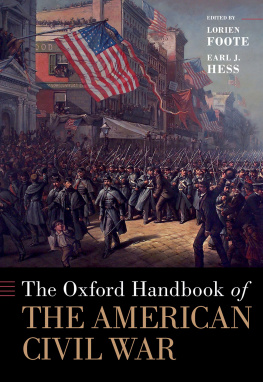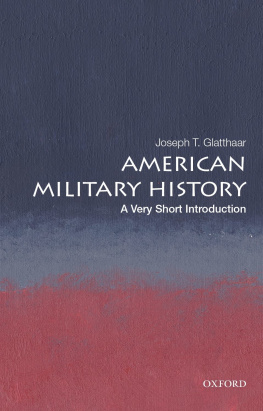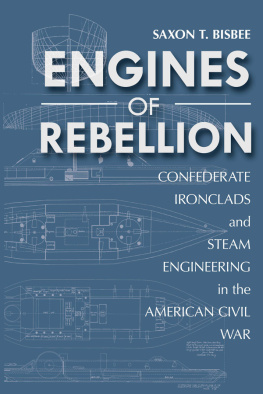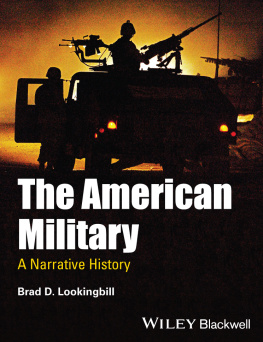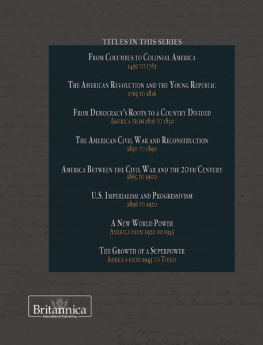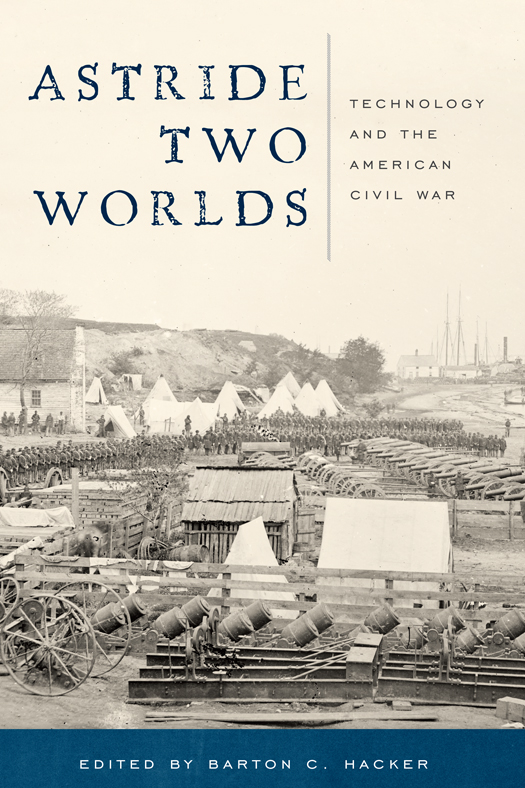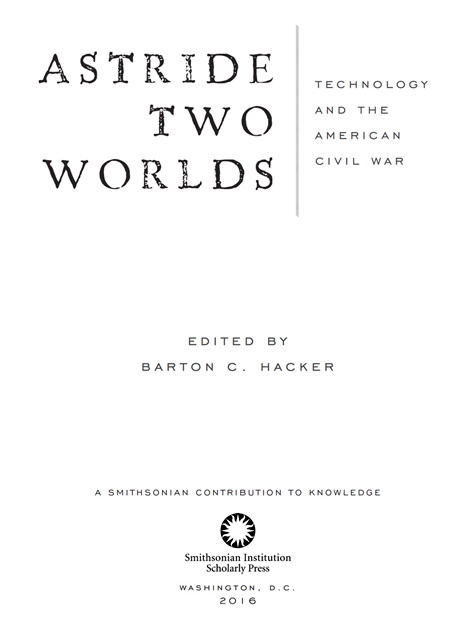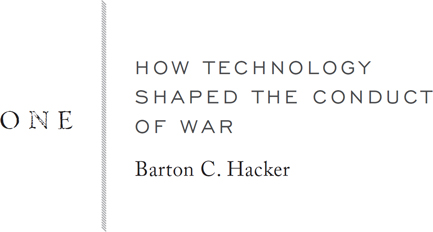Published by
SMITHSONIAN INSTITUTION SCHOLARLY PRESS
P.O. Box 37012, MRC 957
Washington, D.C. 20013-7012
www.scholarlypress.si.edu
Compilation copyright 2016 by Smithsonian Institution
All rights reserved. No part of this publication may be reproduced, stored in a retrieval system, or transmitted in any form or by any means, electronic, mechanical, photocopying, recording, or otherwise, without the prior permission of the publisher.
Cover images: Left halves of stereographs courtesy of Library of Congress, Prints and Photographs Division (LOC). Amassed Federal artillery and troops near Yorktown, Virginia, during the Peninsula Campaign, May 1862. Photographer unknown. LOC, LC-DIG-cwpb-01580.
Library of Congress Cataloging-in-Publication Data
Names: Hacker, Barton C., 1935 editor, author.
Title: Astride two worlds : technology and the American Civil War / edited by Barton C. Hacker.
Description: Washington, D.C. : Smithsonian Institution Scholarly Press, 2016. | A Smithsonian contribution to knowledge. | Includes bibliographical references and index.
Identifiers: LCCN 2015048163 | ISBN 9781935623915 (cloth : alk. paper)
Subjects: LCSH: United StatesHistoryCivil War, 18611865Technology. | TechnologyUnited StatesHistory19th century.
Classification: LCC E468.9 .A88 2016 | DDC 973.7dc23 LC record available at http://lccn.loc.gov/2015048163
ISBN (print): 978-1-935623-91-5
ISBN (e-book): 978-1-935623-92-2
A full subject index is included in the print edition.
v3.1
CONTENTS
Barton C. Hacker
Merritt Roe Smith
Steven A. Walton
Seymour E. Goodman
David J. Gerleman
Jorit Wintjes
Sarah Jones Weicksel
John A. Macaulay
Tom D. Crouch
PREFACE
In November 2012, over the Veterans Day weekend, the National Museum of American History launched its observance of the sesquicentennial of the American Civil War. I organized the opening event, an international symposium on the role of technology in the war. Entitled Astride Two Worlds: Technology and the American Civil War, it was made possible by the financial and material support of the Smithsonian Institution, the National Museum of American History, and the Division of Armed Forces History. The symposium proved highly successful, with 18 participants presenting papers during the three-day event. This book comprises a selection of eight of those presentations, revised and expanded by their authors into formal articles. As context for these articles, I have provided a bibliographical overview of the subject.
The symposium was intended to address a relatively straightforward question. How did nineteenth-century industrialization and rapidly changing technology affect the course and conduct of the Civil War (18611865), which fell almost exactly halfway between the end of the preindustrial Napoleonic Wars (1815) and the onset of the fully industrial Great War (1914)? By the middle of the nineteenth century, industrialization and technological innovation were beginning to alter drastically the character and conditions of warfare as it had been conducted for centuries. Occurring in the midst of these far-reaching changes, the American Civil War straddled two ages; it can justly be labeled both the last great preindustrial war and the first major war of the industrial age. Industrial capacity attained new levels of military significance as transportation improved with the expansion of railroads and steamships. Yet in this as in many other respects, the Civil War was distinctly transitional. Horse-drawn wagons and pack mules still carried the main logistic burden despite the growing significance of railroads as transporters of troops and supplies. Smoothbore artillery still dominated the battlefield despite the advent of rifled artillery. Old-fashioned seamstresses still outnumbered newfangled sewing-machine operators, to cite only a few examples.
The Civil War in America was the first full-scale war shaped in major ways by the tools and weapons of the Industrial Revolution, but that was not always obvious to those in its midst. Even as battle itself presaged the growing mechanization of war with new weapons that multiplied the range and efficiency at which death could be dealt, commanders still looked to the past for tactics and organization. At the same time, ingenuity and imagination marked the efforts of both sides to devise and apply still newer weapons and techniques to realign old habits with new realities. Some were successful, many were not. The enthusiasm for novelty that marked mid-century America produced more failures than successes and Astride Two Ages pays attention to both. For all the passion for the new, much of the soldiers gear and arms had changed little from earlier times. That both Union and Confederate arms production included swords, lances, and pikes underscores the wars transitional nature.
But military technology narrowly defined was only part of the story. Many ostensibly civil technologies that had spread widely during the antebellum years strongly influenced the course of the Civil War. Telegraph and railroad greatly increased the pace at which events moved and combined with other technical changes to vastly extend the scope and deadliness of battle while at the same time compromising its decisiveness. Other factors multiplied the numbers who might be exposed to peril. Mechanizing agriculture fed larger armies; growing industries armed and supplied them; steam power moved them on land and sea. Yet here, as with narrower military technology, novelty hardly ruled unchallenged. Horses still mattered more than steam engines, and disease still killed more soldiers than did weapons.
Astride Two Worlds does not pretend to deal comprehensively with technology and the Civil War, but it does illuminate important aspects of the subject and underlines the often overlooked fact that more innovations failed than succeeded. And while novel technology and new modes of production and transportation significantly shaped the conduct of the Civil War, traditional ways of mustering, arming, provisioning, moving, and sustaining the men who fought were certainly no less important.
Barton C. Hacker
National Museum of American History
8 September 2015
I n the second quarter of the nineteenth century military technology entered a period of sustained innovation and transformation that deserves to be termed revolutionary. The United States entered the preliminary stages of that nineteenth-century militarytechnological revolution by the 1830s. The revolution was well under way when the American Civil War began, but it was far from completed. The Civil War was both the last great preindustrial war and the first major war of the industrial age. On the eve of war the United States was not yet a fully industrialized nation, but the process of industrialization was well advanced. This was the context that distinguished the American Civil War from all earlier wars as well as making it a harbinger of wars to come.


